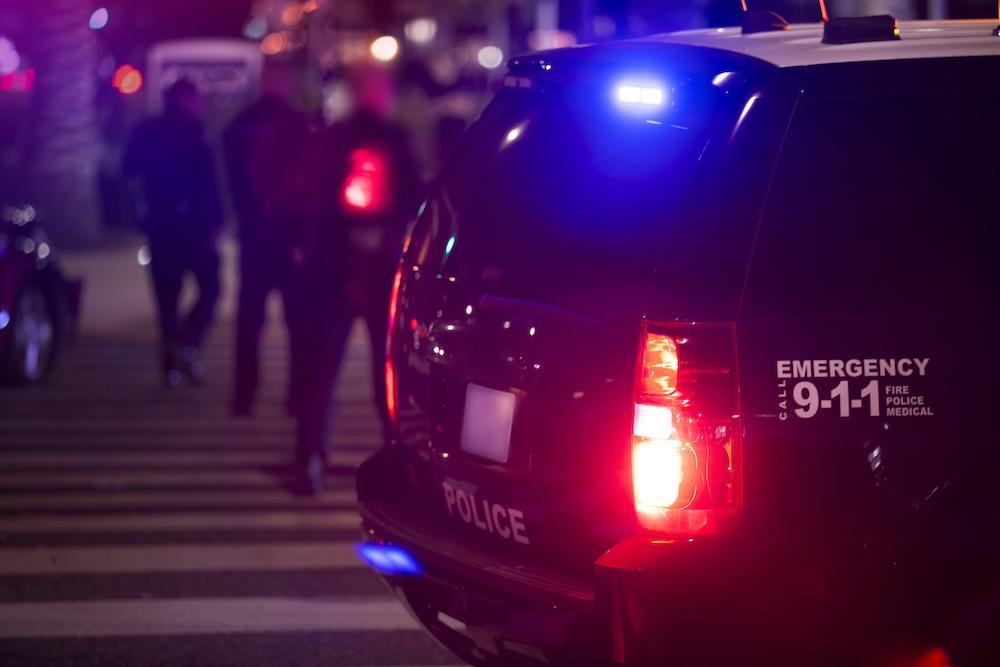George Mason University researchers are using immersive virtual reality to examine ways in which high-stress conditions may influence law enforcement officer decision-making and utilization of equitable policing strategies.

Mason College of Education and Human Development professor Stephanie Dailey is serving as the principal investigator on the project and working with the U.S. Department of Homeland Security Office of Civil Rights and Civil Liberties, in collaboration with the Homeland Security Systems Engineering and Development Institute, a federally funded research and development center at the MITRE Corporation.

For this project, Dailey aims to better understand how law enforcement officer support, including training and wellness strategies, can affect officer decision-making and lead to equitable policing outcomes.
This multidisciplinary, multi-year effort includes Sue-Ming Yang in the Department of Criminology, Law, and Society and Justin Ramsdell in the Department of Psychology in Mason’s College of Humanities and Social Sciences.
The study, which uses MITRE’s SIMEX system, involves law enforcement officers who have been participating in a series of experiments where immersive virtual reality is used to simulate a high-stress encounter with a subject—as portrayed by an avatar—exhibiting various social and behavioral characteristics. The SIMEX simulation labs, located McLean, Virginia, offer a special mix of technical and operational capabilities for government agencies that want to try out new ideas by using dedicated, state-of-the-art laboratories.
In the experiments, the subject avatars vary throughout the experiment in dress, skin tone, compliant or noncompliant behaviors, and whether they are armed or unarmed. In response to a rapid sequence of simulated scenarios in which the suspect displays different combinations of these controlled variables, officers volunteering for this study are required to make quick decisions on how to respond to the subject. The simulated scenes mirror real-life situations in which officers could find themselves.

In discussing her research, Dailey said that examining an officer’s use of force decision-making allows for a better understanding of the circumstances in which officers use different levels of force. Specifically, circumstances in which officers are more likely to react in a way that is not commensurate with the situation or threat level at hand.
“We all have biases,” said Dailey, who is an assistant professor in the Counseling Program in the School of Education. “Anytime we are navigating the world, we are operating off a series of cognitive shortcuts or mechanisms that support rapid decision-making, such as ‘don’t touch a hot stove!’”
But Dailey added that sometimes the cognitive shortcuts people use are based upon faulty assumptions. “Having officers repeatedly go through different simulated scenarios helps us isolate what factors may influence officer decision-making.”
Dailey provided several examples of how the behavioral cues displayed by the subjects in the simulated experiments are manipulated in isolation or in combination with other characteristics thus giving researchers the opportunity to observe the officer’s reactions under different scenarios. The combination of these variables is randomized and determined by algorithms designed to identify factors that may merit further investigation in subsequent runs of the simulated experiments.
“We look at different combinations of factors and see where there are statistically significant variations in the decisions made by an officer on how to interact with the subject, including use of force decisions,” said Dailey, who watches the simulations in real time.
She added that the officer’s use of force is based upon a continuum and not limited to discharging a service weapon but could include verbal commands, soft hand controls, using a taser, attempts at physical restraint, or other nonlethal actions.
The next phase of the project will center on the impact of training supporting equitable policing. Researchers will survey law enforcement officers who have had this training to investigate if it has positively impacted officer behaviors and well-being in the field.
Dailey emphasized the importance of being proactive in ensuring that law enforcement officers are well-equipped to make good decisions not only when faced with a threat, but to be prepared even before a threat presents itself. This can enhance the protection and safety of both the officer and the community.
“The idea is to provide recommendations for these trainings and to help law enforcement agencies understand what part of equitable policing training is most helpful for officers,” she said. “The primary focus of this training is self-awareness, de-escalation skills, and procedural justice.”
The research team will examine whether there are specific aspects of this training that are especially beneficial in enhancing an officer’s ability to respond to a high-stress situation in a way that protects the safety and well-being of the community.
“If my main goal is to help communities that are impacted by police violence, then the best place to start is with the decision-making of officers,” said Dailey. “As a researcher, I am trying to support safer and more just communities by helping officers make informed decisions.”
Read more about the project >
Related News
- October 22, 2025
- September 19, 2025
- August 15, 2025
- July 10, 2025
- June 10, 2025
This content appears in the Fall 2024 print edition of the Mason Spirit Magazine with the title "Improving Officer Decision-Making in High-Stress Situations."
